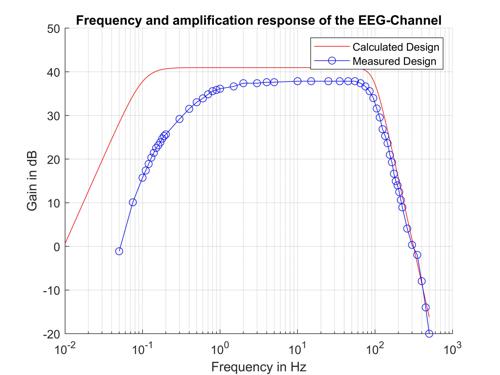Mobile EEG-Biofeedback System
- Degree programme: BSc in Mikro- und Medizintechnik
- Author: Julien Rauber
- Thesis advisor: Prof. Andreas Habegger
- Expert: Rico Zoss
- Industrial partner: Neurobienne Biel
- Year: 2020
A dysfunctional brain can cause various symptoms (e.g. headache, insomnia), which are often not associated with the dysfunctionality and remain untreated. With biofeedback, the patient can train his brain waves in a sustainable way to minimize symptoms. However, today‘s systems are stationary and expensive. A mobile solution can improve the lifequality.
Introduction
Electroencephalography (EEG) is a monitoring method to record the electrical activity of the brain. Electrodes on the scalp measure the electrical potential change of the brain due to neural activities. These brain activities are characterised by grouping them into frequency bands (brainwaves). The increase and decrease of a band are indicators of the current state of mind. Each brainwave is associated with certain activities and mental states. Abnormalities and dysfunctionalities can be found in those frequency bands as offsets and displacements. A visual or acoustic signal feedback of the current state of these bands helps the patient learning to adjust his brainwaves accordingly.
Motivation
Biofeedback treatments are done in weekly sessions. The duration can vary between 20 minutes up to one hour. Several electrodes are placed around the scalp with a conductive gel to record the EEG. This setup is very laborious with a lot of different cables. The success of learning is limited to those weekly sessions. A mobile solution could help the patient to learn at home in different situations and multiple times a week. We expect a higher therapy success rate and faster improvement due to more frequent therapy.
Mobile Feedback System
A prototype hardware system is developed consisting of a signal acquisition unit on the back head and a pair of glasses for a visual feedback. The EEG signals are transferred using Bluetooth to a computer. Software algorithms analyse the signals and compute a value according to the quality of the brain activities. This value is sent to the feedback system, which will adjust the transparency of the glasses.
Acquisition
The acquisition unit uses four electrodes along with a reference electrode. Each signal goes through an amplification and filtering stage. The total gain of the system is around 1000 with a frequency band of 0.1 Hz to 100 Hz.
Feedback
The developed feedback system uses a liquid crystal shutter glass that allows to change the transparency in a certain range. The electronic along with the battery are both integrated in the glasses. Based on patient related requirements such as size etc. the temples are modular and can adapted as needed.
Results
The EEG signals will be directly compared with a reference device. Due the corona virus, the system is not fully developed yet. The verification measurement of the acquisition circuit is promising as shown in the figure 2. There is still a deviation to the expected value in the left half of the targeted frequency band.

